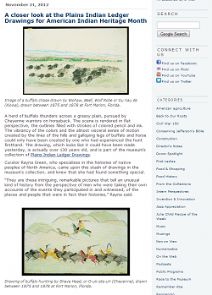As COVID-19 deaths spiked in 2020, Suzanne Firstenberg’s public art installation "In America: How could this happen…"
History Explorer Results (9)
Related Books (0)

Grade Range:
4-12
Resource Type(s):
Reference Materials
Date Posted:
1/9/2018
The First World War remade the world geopolitically and transformed how societies engage and relate to military conflict.
Artistic expression during the war contributed to this transformation. Before World War I, war art largely depicted heroic military leaders and romanticized battles,

Grade Range:
K-12
Resource Type(s):
Artifacts, Primary Sources
Date Posted:
12/31/2010
Cher Ami was a registered Black Check cock carrier pigeon, one of 600 birds owned and flown by the U.S. Army Signal Corps in France during World War I. He delivered twelve important messages within the American sector at Verdun; on his last mission, October 4, 1918, he was shot through the breast

Grade Range:
K-12
Resource Type(s):
Artifacts, Primary Sources
Date Posted:
12/13/2010
This Smith & Wesson was found loaded at the Little Big Horn Battlefield in 1883.
The Smith & Wesson Schofield revolver, .45 caliber, was manufactured from 1875 to 1878. The vast majority of the 9,000 guns went to the U.S. Army. Many saw service in the Indian Wars, though th

Grade Range:
K-12
Resource Type(s):
Artifacts, Primary Sources
Date Posted:
12/30/2009
This blue wool coat is part of a suit of regimentals made for George Washington in 1789. It has a buff wool rise-and-fall collar, buff cuffs and lapels, and buff lining; there is a row of yellow metal buttons on each lapel, as well as on each cuff. The waistcoat and breeches are matching buff woo

Grade Range:
K-12
Resource Type(s):
Artifacts, Primary Sources
Date Posted:
1/22/2009
This small piece of yellow metal is believed to be the first piece of gold discovered in 1848 at Sutter's Mill in California, launching the gold rush.
John Marshall was superintending the construction of a sawmill for Col. John Sutter on the morning of January 25, 1848, on the Sout

Grade Range:
K-12
Resource Type(s):
Artifacts, Primary Sources
Date Posted:
11/10/2008
The ENIAC was a large, general-purpose digital computer built to compute ballistics tables for U.S. Army artillery during World War II. Occupying a room 30 feet by 50 feet, ENIAC—the Electrical Numerical Integrator and Computer—weighed 30 tons and used some 18,000 vacuum tubes. It could compu

Grade Range:
K-12
Resource Type(s):
Artifacts, Primary Sources
Date Posted:
11/6/2008
This print shows American forces attacking the fortress palace of Chapultepec on Sept. 13th, 1847. General Winfield Scott, depicted in the lower left on a white horse, led the southern division of the U.S. Army that successfully captured Mexico City during the Mexican American War.

Grade Range:
5-12
Resource Type(s):
Reference Materials
Date Posted:
10/14/2008
In the decades following the Civil War, the U.S. Army fought dozens of engagements with Indians in the West. This website explores Federal Indian policies and conflicts that arose as Americans flooded west into the Great Plains. Through the use of images and objects from the Museum's collections,

Grade Range:
8-12
Resource Type(s):
Reference Materials
Duration:
5 minutes
Date Posted:
9/5/2013
In this post, readers will investigate a few examples of drawings made by Plains Indians who, in the late 19th and early 20th centuries, were held in captivity by the U.S. Army at places like Fort Marion in Florida. Curator Rayna Green describes how these images depict









